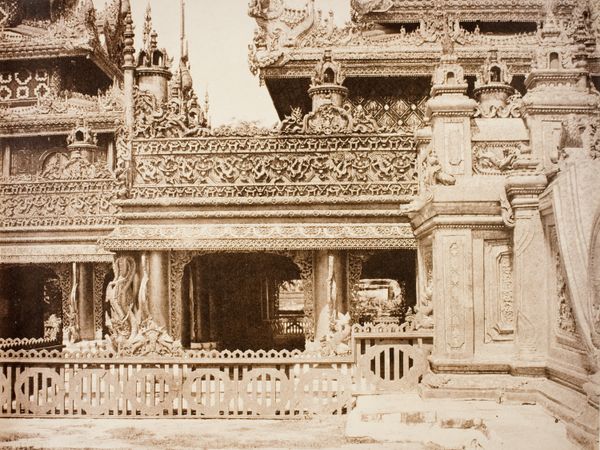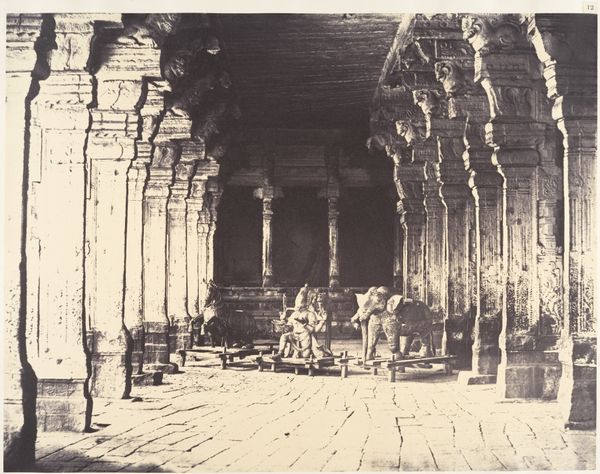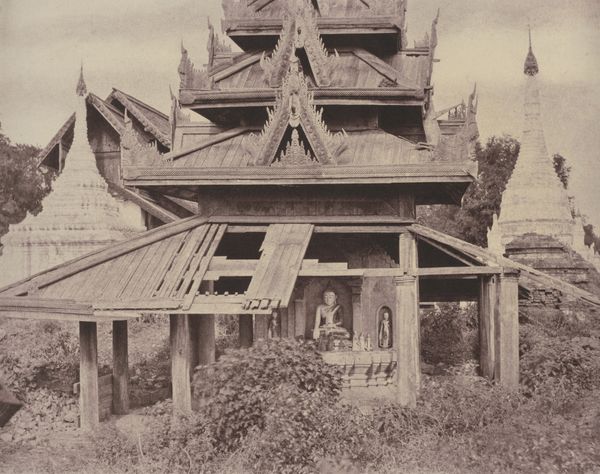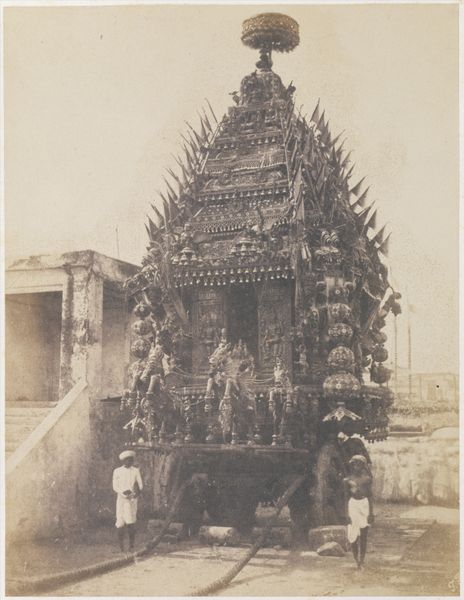
Amerapoora: Doorway of Pyathat on East of Maha-too-lo-Bounghian Kyoung c. 1855
0:00
0:00
photography, site-specific, albumen-print, architecture
#
asian-art
#
landscape
#
photography
#
geometric
#
site-specific
#
albumen-print
#
architecture
Dimensions: image: 34.8 × 27.1 cm (13 11/16 × 10 11/16 in.) mount: 58.3 × 45.7 cm (22 15/16 × 18 in.)
Copyright: National Gallery of Art: CC0 1.0
This photograph of the Maha-too-lo-Bounghian Kyoung doorway in Amerapoora was taken by Linnaeus Tripe in the mid-19th century, using the wet collodion process. The tonal range of this image is narrow, drawing our attention to the textures and details of the wooden architecture. The doorway is densely ornamented with relief carvings. The architecture's intricate details, from the layered roof to the ornate panels of the door, are rendered with remarkable clarity, emphasizing the skill of the woodworkers. Consider the labor involved in creating such an ornate structure, the workshops filled with artisans meticulously carving each element. In its time, photography was a relatively new medium, positioned between documentation and art. Tripe’s photograph captures not only the physical structure, but also the cultural values and traditions embedded in its making. This image invites us to consider photography not just as a record, but as a medium that, like craft, carries cultural meaning.
Comments
No comments
Be the first to comment and join the conversation on the ultimate creative platform.













